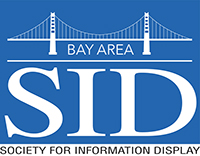Archives 2023
December 14, 2023
Cockpit Designs for the Future of Mobility
Mike Casper, co-founder and CEO of Azumo
Presentation Abstract
Mike Casper
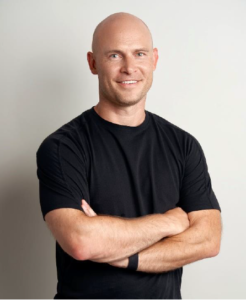 Mike Casper, a seasoned entrepreneur, engineer, and marketer is the co-founder and CEO of Azumo, a display technology firm based in Chicago, with global operations in Mexico, China, and Japan. Mike's professional journey began after earning a BS in Mechanical Engineering from the University of Wisconsin-Madison and an MBA from the Kellogg School of Management at Northwestern University. He kickstarted his career at global firms such as 3M and ZS Associates, where he honed his expertise across a range of domains, from manufacturing and energy solutions to technology marketing. His entrepreneurial journey took off with the co-founding of FLEx Lighting in 2008, where he co-developed innovative lighting technology with versatile applications. He has served as the CEO of Azumo for over 15 years, steering it through business development and strategic planning while securing global strategic partnerships with industry leaders such as Sharp, AUO, and Foxconn, to name a few. Azumo’s lightguide technology is used in reflective LCDs for a variety of commercial and industrial applications, and is currently being integrated into new automotive applications. Residing in Chicago with his wife and three children, Mike enjoys running, basketball, and spending quality time with his family.
Mike Casper, a seasoned entrepreneur, engineer, and marketer is the co-founder and CEO of Azumo, a display technology firm based in Chicago, with global operations in Mexico, China, and Japan. Mike's professional journey began after earning a BS in Mechanical Engineering from the University of Wisconsin-Madison and an MBA from the Kellogg School of Management at Northwestern University. He kickstarted his career at global firms such as 3M and ZS Associates, where he honed his expertise across a range of domains, from manufacturing and energy solutions to technology marketing. His entrepreneurial journey took off with the co-founding of FLEx Lighting in 2008, where he co-developed innovative lighting technology with versatile applications. He has served as the CEO of Azumo for over 15 years, steering it through business development and strategic planning while securing global strategic partnerships with industry leaders such as Sharp, AUO, and Foxconn, to name a few. Azumo’s lightguide technology is used in reflective LCDs for a variety of commercial and industrial applications, and is currently being integrated into new automotive applications. Residing in Chicago with his wife and three children, Mike enjoys running, basketball, and spending quality time with his family.November 15, 2023
Multi-Color Dynamic Surfaces Using ePaper Film
Bryan Chan, Senior Director of Business Development and Applications Engineering, E Ink
Presentation Abstract
Bryan Chan
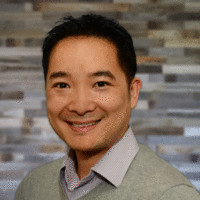 Senior Director of Business Development and Applications Engineering, E Ink
Senior Director of Business Development and Applications Engineering, E Ink
Bryan Chan is Senior Director of Business Development and Applications Engineering at E Ink. He leads the business development activities at E Ink working on strategic initiatives and new applications. Prior to leading the business development team, Bryan led product management for ink and displays for retail and IOT. Before joining E Ink, Bryan was at Marvell and Advance Micro Devices in business and technical roles. Bryan holds a B.S. in Electrical Engineering from Stanford University and has over 35 issued patents.
Bryan is currently serving as Regional Vice President for SID’s Bay Area chapter and has been actively volunteering and promoting SID for the past 9 years.
Bryan's LinkedIn
October 18, 2023
Towards Immersive Augmented Reality
Matt Colburn, R&D Director, Meta Reality Labs Research, Meta
Presentation Abstract
Matthew Colburn
 Matthew Colburn is a technology leader with experience delivering innovative solutions at the intersection of materials, optics, and nanofabrication. In 2001, he received his Ph.D. in Chemical Engineering at The University of Texas at Austin developing imprint lithography technology. After graduating, Dr. Colburn joined IBM Research ultimately leading their advanced patterning organization. In 2016, he joined Oculus Research (now Meta Reality Labs Research) and grew the Waveguide product team within Display and Optics. Currently, he is the research and development director focused on driving immersive augmented reality combiner technology within the Optics and Display Research organization. He has over 100 issued patents, co-authored over 80 publications, and 2 book chapters
Matthew Colburn is a technology leader with experience delivering innovative solutions at the intersection of materials, optics, and nanofabrication. In 2001, he received his Ph.D. in Chemical Engineering at The University of Texas at Austin developing imprint lithography technology. After graduating, Dr. Colburn joined IBM Research ultimately leading their advanced patterning organization. In 2016, he joined Oculus Research (now Meta Reality Labs Research) and grew the Waveguide product team within Display and Optics. Currently, he is the research and development director focused on driving immersive augmented reality combiner technology within the Optics and Display Research organization. He has over 100 issued patents, co-authored over 80 publications, and 2 book chapters
September 29, 2023
BASID Annual Dinner, September 29, 2023
Matt Caspari, Managing Partner, Alumni Ventures
The Bay Area Chapter of SID invites you and your guest to the BASID 2023 Annual Dinner
 Bay Area SID Chapter warmly invites you to join your local display industry colleagues for our annual social event, an evening full of delicious food, beverages, and great company! This year we are hosting our tradition at a brand new stunning location, The Glasshouse in San Jose, a 12,000 sq. ft. premier event space.
Reserve your spot today for you and your guests and enjoy the advantages of being an SID member. BASID is covering the majority of the expense making it more affordable to attend. In addition, this year we have a captivating speaker, a veteran in the venture capital world. Matt Caspari will share his insights on the venture industry focusing on new green technologies that promise to benefit our environment.
We are looking forward to seeing you at BASID's Annual Dinner!
Bay Area SID Chapter warmly invites you to join your local display industry colleagues for our annual social event, an evening full of delicious food, beverages, and great company! This year we are hosting our tradition at a brand new stunning location, The Glasshouse in San Jose, a 12,000 sq. ft. premier event space.
Reserve your spot today for you and your guests and enjoy the advantages of being an SID member. BASID is covering the majority of the expense making it more affordable to attend. In addition, this year we have a captivating speaker, a veteran in the venture capital world. Matt Caspari will share his insights on the venture industry focusing on new green technologies that promise to benefit our environment.
We are looking forward to seeing you at BASID's Annual Dinner!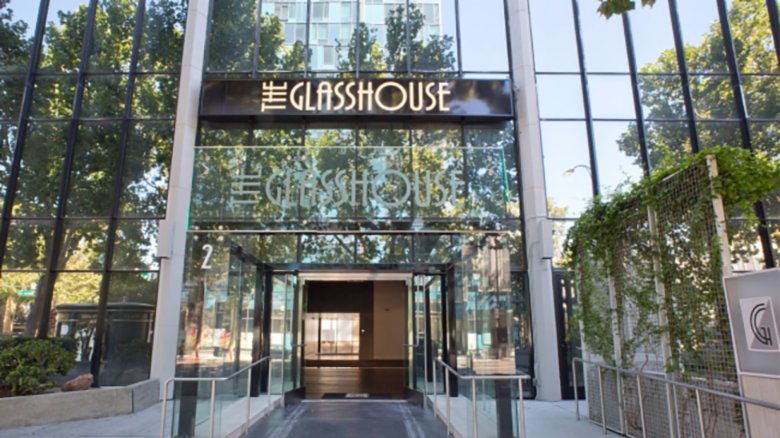
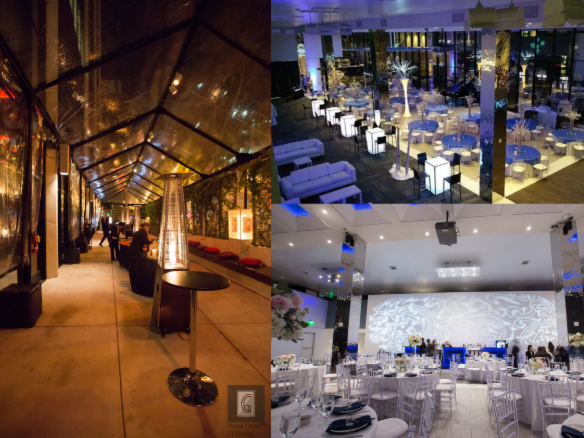
Venture Capital Trends and Climate Tech 2.0: Navigating the New Wave of Sustainable Innovation
 The presentation will begin with an overview of the prevailing trends in the venture capital market. The spotlight will then shift to the evolution of climate tech investing, drawing a clear contrast between the first wave (Climate Tech 1.0) and the current, more investable market dynamics (Climate Tech 2.0). We will explore the unique opportunities and challenges that this new wave presents, not only for investors and entrepreneurs but also for society at large, underscoring the transformational potential of sustainable innovation.
The presentation will begin with an overview of the prevailing trends in the venture capital market. The spotlight will then shift to the evolution of climate tech investing, drawing a clear contrast between the first wave (Climate Tech 1.0) and the current, more investable market dynamics (Climate Tech 2.0). We will explore the unique opportunities and challenges that this new wave presents, not only for investors and entrepreneurs but also for society at large, underscoring the transformational potential of sustainable innovation.
Venue: The Glasshouse
84 W Santa Clara St. #100 San Jose, CA 95113 https://www.tghsj.com/Timeline:
Sponsor
SID, Bay Area would like to thank our sponsor Corning for their generous support.
![]()
Corning develops cutting-edge solutions in consumer electronics, advanced optics materials for the semiconductor industry, and many applications in between.
August 16, 2023
Developing Printable Optoelectronics and Application In Full-Color AR Displays
Reza Chaji, CEO and co-founder of VueReal Inc
Presentation Abstract
Reza Chaji, CEO and co-founder of VueReal Inc
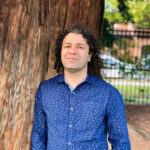 Reza Chaji is the CEO and co-founder of VueReal Inc. This Waterloo-based company is focused on revolutionary technologies for enhancing electronic systems (displays, sensors, AI, Autonomy, medical, health, automotive, …) by integrating millions of micro optoelectronic devices into system substrates scalably, affordably and rapidly.
Reza Chaji is the CEO and co-founder of VueReal Inc. This Waterloo-based company is focused on revolutionary technologies for enhancing electronic systems (displays, sensors, AI, Autonomy, medical, health, automotive, …) by integrating millions of micro optoelectronic devices into system substrates scalably, affordably and rapidly.
He has extensive experience in developing and commercialization of advanced technologies. His work for enhancing OLED TVs' yield, quality and reliability is adopted in today’s OLED TVs.
He received his Ph.D. degree (2008) in Electrical Engineering at the University of Waterloo, Waterloo, Canada, where he worked on designing and implementing large-area electronic systems for AMOLED displays, biomedical imagers, and bio-array sensors.
He has over 70 published papers and one book in the field of display and sensor, over 200 filed/granted patent applications, and received several prestigious scholarships and awards, including the Young Alumni Achievement Medal, Faculty of Engineering, University of Waterloo, 2012; CMC Douglas R. Colton Medal for Research Excellence 2009; and Strategic Microelectronics Council of ITAC Industrial Collaboration Award 2007.
June 29, 2023
Advancements in Self-Emissive MicroLED Display Technology for Augmented Reality
Qiming Li, CEO of JBD (Jade Bird Display)
Presentation Abstract
Qiming Li, CEO, JBD (Jade Bird Display)
 Qiming Li, the CEO of JBD (Jade Bird Display), holds a Ph.D. in Chemical Engineering, which he earned from the University of New Mexico in 2005. Following his graduation, Qiming Li embarked on a postdoctoral position at Sandia National Laboratory, where he subsequently became a technical member of staff. During his seven-year tenure at Sandia, he focused on the synthesis of III-nitride nanowire materials and their application in device fabrication and testing. In 2013, Qiming Li assumed the role of Chief Technology Officer (CTO) at Enraytek Optoelectronics in Shanghai, China. Two years later, in 2015, he founded JBD and has since served as the CEO and Chairman of the company. As the CEO, Qiming Li's primary interests and efforts revolve around technology and product development, with a specific focus on the commercialization of microLED displays for augmented reality (AR) applications. Qiming Li's passion lies in inventing groundbreaking technologies and building microdisplay products, which is evident from his extensive patent portfolio comprising over 150 patents. Under his leadership, JBD's microLED panel samples and products have garnered significant recognition. In 2018, they received the esteemed "Best Prototype Award" from the Society of Information Display, and in 2023, JBD's displays were honored with the prestigious "Display of the Year Award."
Qiming Li, the CEO of JBD (Jade Bird Display), holds a Ph.D. in Chemical Engineering, which he earned from the University of New Mexico in 2005. Following his graduation, Qiming Li embarked on a postdoctoral position at Sandia National Laboratory, where he subsequently became a technical member of staff. During his seven-year tenure at Sandia, he focused on the synthesis of III-nitride nanowire materials and their application in device fabrication and testing. In 2013, Qiming Li assumed the role of Chief Technology Officer (CTO) at Enraytek Optoelectronics in Shanghai, China. Two years later, in 2015, he founded JBD and has since served as the CEO and Chairman of the company. As the CEO, Qiming Li's primary interests and efforts revolve around technology and product development, with a specific focus on the commercialization of microLED displays for augmented reality (AR) applications. Qiming Li's passion lies in inventing groundbreaking technologies and building microdisplay products, which is evident from his extensive patent portfolio comprising over 150 patents. Under his leadership, JBD's microLED panel samples and products have garnered significant recognition. In 2018, they received the esteemed "Best Prototype Award" from the Society of Information Display, and in 2023, JBD's displays were honored with the prestigious "Display of the Year Award."
June 14, 2023
Highlights from Display Week 2023
Sweta Dash, Founder and President at Dash-Insights and Sihui He, Physicist at Applied Materials
Presentation Abstract
Every year BASID invites industry experts to give their thoughts and insight on products and technologies that were showcased at Display Week 2023. This year we are pleased to welcome Sweta and Sihui to share with us their take on Display Week 2023!
Sweta Dash: Emerging Display Technologies at SID Display Week 2023
DisplayWeek 2023 showcased products based on emerging display technologies (such as OLED, QD OLED, MiniLED, MicroLED, MicroOLED (SiOLED), Light Field Display..) and discussed technology advancements and trends through keynote sessions, seminars, symposiums and Business conference.
What will be the market implications of these technology development trends? Can these developments and innovations for next gen products drive future demand growth? This presentation will discuss emerging display technology trends and implications for various application markets (TV, monitor, notebook, tablet, smartphones, auto, AR/VR and others).
Sihui He: AR/VR at Display Week 2023
Display Week 2023 showcased different displays and optics for AR/VR. This presentation will put the main technologies together, explain how they work, and compare those technologies.
Sweta Dash, President, Dash-Insights
 Sweta Dash is the Founder/President of Dash-Insights, a market research consulting firm based in San Jose, California, USA. It provides actionable insights for the Display Industry.
Sweta Dash is the Founder/President of Dash-Insights, a market research consulting firm based in San Jose, California, USA. It provides actionable insights for the Display Industry.
She has over 30 years of experience in the Display Industry market research. Her expertise spans the entire spectrum of Display technologies and application markets. She has authored numerous articles and is a well-known keynote speaker for major global industry events. She is a highly sought-after consultant. She regularly writes articles on display markets and technologies in the “Display Daily” Publication.
Prior to starting Dash-Insights, Sweta was the Senior Director of Display Research, and Strategy at IHS Technology, and was the head of applied research, consulting and strategy. During her years at IHS and iSuppli, she was exceptionally accurate in forecasting LCD supply, demand, pricing, and technology adoption.
Sweta holds a Bachelor of Arts (Hons.) and a Master of Arts in Economics from the University of Toronto, Canada.
Sihui He, Physicist, Applied Materials
 Sihui He is currently serving as Vice Chair for Bay Area Chapter of SID (BASID), and she is a physicist in Applied Materials, working on waveguides for Augmented Reality (AR)/Mixed Reality (MR) glasses.
Sihui He is currently serving as Vice Chair for Bay Area Chapter of SID (BASID), and she is a physicist in Applied Materials, working on waveguides for Augmented Reality (AR)/Mixed Reality (MR) glasses.
Sihui has been in the AR/MR industry for 8 years. She began her AR/MR journey in 2015 in Microsoft HoloLens team, which developed the first all-in-one mixed reality (MR) headset. She worked on the development of future generations, aiming to improve waveguide efficiency, generate true 3D image with varied focus depth, and to solve occlusion problem of the outside world. These three topics remained to be major challenges for AR display today.
In 2017, Sihui joined DigiLens. There she developed waveguide simulation tools from scratch, then used these tools to design AR glasses as well as the fabrication optics. These simulation tools, waveguide design and fabrication were successfully licensed/transferred to customers.
She joined Meta Reality Lab Research in 2020. She worked on both AR and VR (virtual reality) there. She was the tech-lead of AR waveguide future technology development. She also led the development of a high efficiency VR display from concept to prototype.
Sihui holds a Bachelor of Information Engineering from Zhejiang University in China, and a Ph.D. in optics from University of Central Florida, under supervision of Prof. Shin-Tson Wu in CREOL and Prof. Jiyu Fang in Department of Materials Science and Engineering. Her graduate research focused on liquid crystal biosensors.
April 19, 2023
HRI Designer Compounds® to Drive NextGen Display, XR, and Optic Devices
Craig Bandes, President & CEO of Pixelligent Technologies
Presentation Abstract
High refractive index (HRI) materials have become essential enablers for diverse technologies that rely on the manipulation of light in specific ways. The range of applications that benefit from HRI materials is broad and includes displays, extended reality (XR) devices, sensors, optical and 3D printed lenses, free‐form optics, metalenses, and anti‐reflective coatings.
This is a core business focus for Pixelligent.
Each application has a unique set of desired properties, specifications, manufacturing processes, and reliability requirements. To address the specialized requirements, Pixelligent developed a proprietary method called the PixClearProcess®. The method tunes the desired high index and processability requirements of dispersions and formulations to match the ever‐
increasing performance targets of product developers. By controlling all components of the formulation, from the synthesis of the 3nm to 20nm nanocrystals with uniform shapes and sizes, and the covalently bonded capping materials, to the formulation components, Pixelligent delivers Designer Compounds® and uniform dispersions that are broadly compatible with commonly used monomers and manufacturing processes.
In this talk, I will describe our approach to nanoparticle synthesis, how we tune the properties of our dispersions and formulations, our mass‐production capabilities, the current products and target markets, and what comes next.
Craig Bandes
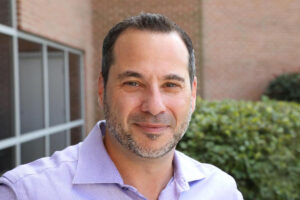
Craig Bandes, 51, has been President & CEO of Pixelligent Technologies since 2009. He has over 25 years of experience as a CEO, entrepreneur, and angel investor building companies in the technology, defense and professional services industries. As CEO, Craig has led Pixelligent through a successful plan of reorganization, raised over $50M in equity, secured $15M+ in U.S. government grants, and established Pixelligent as the technology leader for High‐Index materials for consumer electronics applications. Prior to Pixelligent, he was the President & CEO of Global Secure Corp, a company focused on providing software, training, and equipment solutions for the homeland security market. Global Secure grew from a start‐up to operations in 4 states, with over 200 employees, before it was acquired in 2007. Craig negotiated over $300 million in transactions, completing financings, acquisitions and strategic partnerships in the US,
Asia and Europe. Craig sits on the Board of Directors of Pixelligent, is a member of the NanoBusiness Alliance Advisory and The CEO Exchange boards, and is an active angel investor. He received degrees in Entrepreneurship and Finance and from Babson College.
March 15, 2023
BOE Enabling Next Generation Displays
Scott Birnbaum, CEO BOE Technology America
Presentation Abstract
Scott Birnbaum
 Scott is the North American CEO for BOE, a world leading IoT company and the world's largest display manufacturer, providing more than one out of every four displays around the world. Scott is concurrently the CEO of MORF AI, a Silicon Valley tech up startup, global gallery, and Hollywood artistic studio delivering fine art to digital screens.
Scott is the North American CEO for BOE, a world leading IoT company and the world's largest display manufacturer, providing more than one out of every four displays around the world. Scott is concurrently the CEO of MORF AI, a Silicon Valley tech up startup, global gallery, and Hollywood artistic studio delivering fine art to digital screens.
Scott led Samsung's multi-billion-dollar display business in the Americas for more than a decade and now is on the governing board of XSamsung, a recently formed global Samsung alumni organization.
Scott entered the display industry nearly thirty years ago at Sharp where he pioneered partner display integration programs.
Scott is a driver of industry megatrends like the vidification of devices, bringing the movie theater experience to homes and pockets everywhere and enabling TVs that double as art galleries.
Having a strong fascination with travel, his escapades include running with the Olympic Torch in China, the thrill of being chased by monkeys in Malaysia, and being thrust inside one of the world's biggest waterfalls in South America. Tapping into his passions for cycling and helping kids, Scott and his son biked 550 miles from San Jose to Los Angeles raising money and awareness for St. Jude's Children's Research Hospital.
February 15, 2023
Printed OLED Indicator Displays
Dr. Whitney Gaynor, CEO and co-founder of Sinovia Technologies
Presentation Abstract
Dr. Whitney Gaynor
 Whitney is the CEO and co-founder of Sinovia Technologies, a Stanford University spinout working to realize roll-to-roll printed OLEDs based on flexographic printing. Over time, her role at the company has evolved from pure R&D in roll-to-roll processing and OLED stack development to include managing a small team, supply chain sourcing and partnerships, working with customers to define technology requirements, and more general business development. She has also served as PI for multiple U.S. government grant programs from the National Science Foundation and the U.S. Department of Energy, and now occasionally serves as a reviewer for those programs. She took Sinovia through Y Combinator in 2017 and has raised three rounds of venture funding to date.
Whitney is the CEO and co-founder of Sinovia Technologies, a Stanford University spinout working to realize roll-to-roll printed OLEDs based on flexographic printing. Over time, her role at the company has evolved from pure R&D in roll-to-roll processing and OLED stack development to include managing a small team, supply chain sourcing and partnerships, working with customers to define technology requirements, and more general business development. She has also served as PI for multiple U.S. government grant programs from the National Science Foundation and the U.S. Department of Energy, and now occasionally serves as a reviewer for those programs. She took Sinovia through Y Combinator in 2017 and has raised three rounds of venture funding to date.
Whitney's doctoral thesis work served as the basis for founding Sinovia and her first author peer-reviewed papers in the field of organic electronics have been cited over 1200 times. She holds an S.B. in materials science and engineering from MIT and a masters and PhD in materials science and engineering from Stanford University.
January 18, 2023
Developing a Platform for Creating Waveguide Combiners for AR Headsets and Meta Surface-based Optics
Dr. Robert Visser , Appointed Vice President Engineering, Office of the CTO, Applied Materials, Inc.
Presentation Abstract
Dr. Robert Visser, Appointed Vice President Engineering, Office of the CTO, Applied Materials, Inc.
 Robert Visser is Appointed Vice President of Engineering in the Office of the CTO at Applied Materials, Inc. He is responsible for creating business opportunities in new and adjacent markets related to advanced displays, optical components for augmented reality, ‘flat optics’ (metasurface based optics) and advanced packaging solutions enabling new packaging strategies for heterogenous integration. He also advises Applied's chemistry group in India at IIT Mumbai and is looking at the role of new materials in quantum technology to explore new growth opportunities for Applied Materials in quantum computing, quantum communication, and quantum sensing.
Robert Visser is Appointed Vice President of Engineering in the Office of the CTO at Applied Materials, Inc. He is responsible for creating business opportunities in new and adjacent markets related to advanced displays, optical components for augmented reality, ‘flat optics’ (metasurface based optics) and advanced packaging solutions enabling new packaging strategies for heterogenous integration. He also advises Applied's chemistry group in India at IIT Mumbai and is looking at the role of new materials in quantum technology to explore new growth opportunities for Applied Materials in quantum computing, quantum communication, and quantum sensing.
Dr. Visser’s work in the display industry spans more than three decades. During that time, he helped develop technology that commercialized flat panel display manufacturing and uncovered breakthroughs that will lead to a new generation of flexible and bendable displays. Virtually every OLED display made today uses technology elements that he helped pioneer during his career.
In 2020 he was recognized by the Society of Information Display (SID) with the prestigious Fellows Award for his distinguished and valued “contributions to the development and commercialization of OLED technology, and specifically to thin film encapsulation solutions." He holds a master’s degree in theoretical organic chemistry and physics, and a Ph.D. in physical and organic chemistry, both from Leiden University, Netherlands. He has numer
